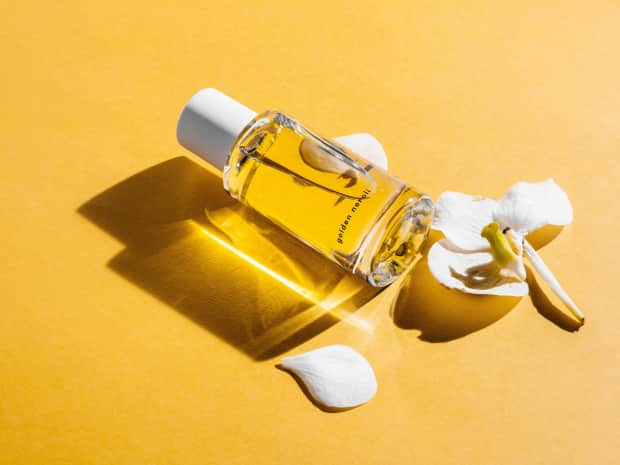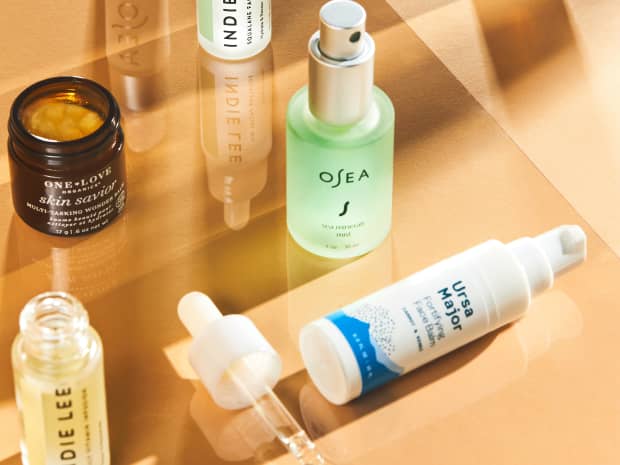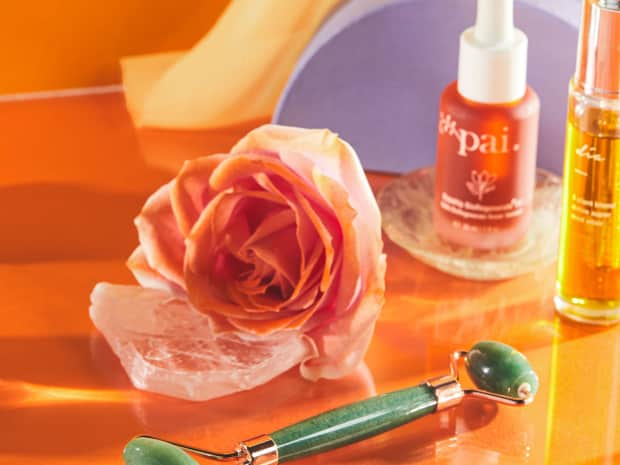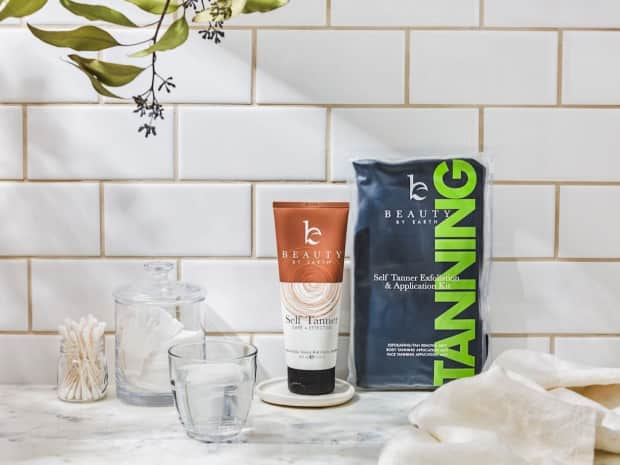
Citrus notes
- lemon
- tangerine
- orange
- bergamot
- grapefruit

Last Updated: August 23, 2022
Learn about the potential dangers of conventional perfumes, why natural perfumes are better for your health, and check out the best natural perfumes our members love.
How fitting that the word "perfume" is derived from the Latin "per fume," which means "through smoke." We're here to cut through the smoke and mirrors when it comes to manufacturing conventional — and often chemical-laden — modern perfumes. Read on to learn about possible dangerous ingredients found in perfumes, why natural perfumes are the way to go, and our top 10 natural perfumes that members feel make good scents. (Pun always intended.)
As is so often the case with our guides to natural products, we find it helpful to look first at what natural perfumesdon't contain. Here are our top ingredients to avoid in perfume:
The biggest problem with conventional perfumes is what we can't see on the label, thanks to a loophole in Food and Drug Administration (FDA) disclosure and testing. Manufacturers are allowed to simply list the word "fragrance" among their ingredients — and that one word can represent literally 3,000+ chemicals, most of them untested for safety.
Under a sort of "trade secret" umbrella, companies aren't required to list all of the many chemicals used to create their fragrances. So even if you were looking for a scary ingredient we listed, you might not see it, but it could be present as part of "fragrance."
Today's best natural perfumes resemble the original perfumes recorded thousands of years ago, with essential oils and natural alcohols among their top ingredients.
GROVE TIP
Since the terms "natural perfume" and "natural fragrance" aren't regulated, it’s a good idea to read the labels and do a little brand recon to check out the company’s values and natural claims. On the label, look for plant-derived essential oils and natural carrier oils like coconut, jojoba, and olive.
Standard methods of making perfumes are basically the same for both conventional and natural — it's the base ingredients that differ.
Conventional perfumes typically start with a host of synthetic ingredients to create a scent, and many of these are known toxins. Natural perfumes start with plants — namely, their essential oils — which are highly aromatic and — hopefully — pleasing to the olfactory sense. Pure essential plant oils are very strong, and many shouldn't be directly applied to the skin, so in natural perfumes, they’re diluted with alcohol or carrier oils, which also help blend the scents.
Here are some of the most popular essential oils in natural perfumes:



GROVE TIP
How long a natural perfume lasts depends on the quality of the essential oils, the carrier oil, the production process, and the variety of notes. A quality natural perfume can last as long as conventional perfumes.
Good Chemistry wants to treat your nose to beautifully crafted perfumes that are so yummy, they’ll have everyone asking what scent you're wearing. This brand uses plant-based essential oils and thoughtfully chosen formulas to create its perfumes — no parabens, propylene glycol, phthalates, or dyes are invited to this VIP list of clean ingredients. They’re also vegan, cruelty-free, and PETA-certified because good vibes are just as important as good smells.
But that’s not the only reason we love ‘em. Good Chemistry is on the pulse point of sustainability with brand partnerships with companies like Terracycle that make it super easy to recycle each and every component of the brand's perfume bottles. And with full transparency on all of Good Chemistry's ingredients, you can count on a seriously delicious experience down to the last drop. Science has never smelled so good.
Need a new scent? Discover a few of our favorite perfumes below:
Queen Bee is a royal celebration of sparkling fruits with notes of black currant, peony, and amber that are vibrant and bold with a hint of sass.
Sassy, but make it travel-sized. Queen Bee’s vibrant fruity aspects melt through to warm undertones that unfold to reveal its fresh, floral heart.
With its delightful balance of freesia, raspberry, and vanilla that are both playful and at ease, Sugar Berry evokes an image of a pink sands paradise with a sweet and irresistible energy.
Magnolia Violet invites you on a unique adventure with captivating notes of magnolia, peony, and amber, making it an elegantly romantic delight to wear.
Vacation vibes? Check. Notes of dragonfruit, magnolia, and sugared vanilla make Good Chemistry’s Pink Palm fragrance fresh and lively with a free spirit.
This skin-loving formula has notes of coconut milk, apple blossom, and vanilla, giving Cheerful Charmer an indulgent and flirty charm.
Are you a sublime floral or flirtatious gourmand? Tiger Lily is a happy balance of both, with delightful and daring notes of orange flower, vanilla, and amber.
Designed with notes of juicy tropical fruits, fresh-cracked coconut, and oceanic driftwood, Coco Blush delivers a summer state of mind all year round.
DID YOU KNOW?
Records show that the first documented perfume maker was a woman named Tapputi who lived in Cyprus about 4,000 years ago. Throughout history, perfumes have been used for religious ceremonies, clothing, food, bathing rituals, and of course, as a seductive tool to entice one's paramour.

Here at Grove Collaborative, we’re big believers in the power of natural products — both for ourselves and for the planet. But we know making the switch can be daunting, especially if you’re accustomed to conventional products and are new to the world of natural, eco-friendly alternatives. That’s why we’ve created Beginner’s Guides to Natural. Each week, we’ll give you a primer on the ins and outs of transitioning to a natural version of a common household item, plus a few of our favorite brands for making the switch. Let’s get to swapping!

Learn why these natural toners are your secret step to healthy skin.

A guide to the best natural lip balms and why they’re so effective.

Learn about the benefits of natural eye creams for the most delicate area on your face.

A breakdown of natural self tanners and sunless tanners — and what might be lurking in conventional brands.